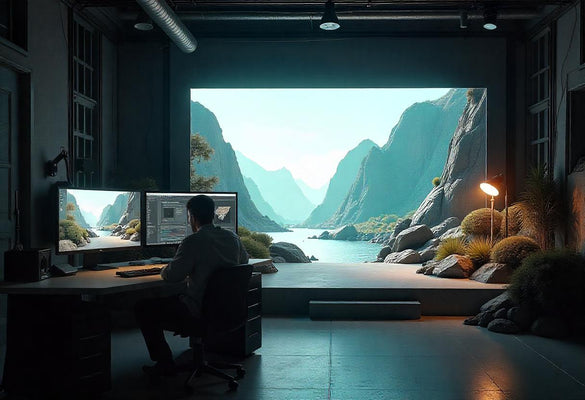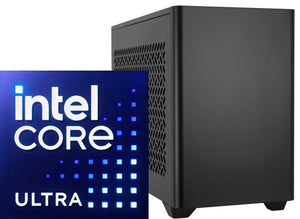Virtual Production Background Creation Tips

The film industry has experienced a significant shift toward virtual production backgrounds as studios seek more efficient, cost-effective ways to create stunning cinematic environments. Modern filmmakers are moving away from traditional green screen limitations and physical set construction, instead embracing advanced digital backdrop creation techniques that offer unprecedented creative control and flexibility.
This transformation has revolutionized how productions approach virtual set design, enabling real-time visualization and immediate creative adjustments during filming. The ability to create photorealistic 3D environment creation has opened new possibilities for storytelling while reducing production timelines and budgets.
Essential Components of Professional Virtual Production Backgrounds
Creating compelling virtual world building requires a deep understanding of both technical requirements and artistic vision. The foundation of any successful virtual production background lies in meticulous planning, technical precision, and creative execution that serves the story being told.
Professional background asset development involves multiple layers of complexity, from initial concept design through final rendering and real-time implementation. Each element must work harmoniously to create believable, immersive environments that support the narrative without drawing attention to the technology itself.
The most successful virtual production backgrounds seamlessly blend practical elements with digital assets, creating environments that feel authentic and lived-in. This requires careful attention to lighting consistency, color grading, and spatial relationships between digital and physical elements within the scene.

Leading Virtual Production Companies and Their Innovative Approaches
ARWALL stands at the forefront of virtual production innovation, providing cutting-edge LED wall technology and comprehensive virtual production solutions. Their ARFX Infinite Studio platform offers filmmakers unprecedented control over virtual environments, enabling real-time background creation and manipulation during production.
Industrial Light & Magic (ILM) has pioneered virtual production techniques through their StageCraft technology, used in productions like "The Mandalorian." Their approach combines high-resolution LED volumes with advanced rendering systems to create photorealistic virtual environments that respond to camera movements in real-time.
Epic Games continues to push boundaries with their Unreal Engine technology, providing powerful tools for creating interactive virtual environments. Their real-time rendering capabilities allow filmmakers to make immediate adjustments to lighting, weather, and environmental conditions during filming.
NVIDIA's Omniverse platform has transformed collaborative virtual production workflows, enabling multiple teams to work simultaneously on complex virtual environments. Their AI-powered tools accelerate the creation of detailed backgrounds and environmental assets.
Disguise offers comprehensive virtual production solutions that integrate seamlessly with existing production workflows. Their platform provides robust tools for managing complex virtual environments and ensuring consistent quality across multiple camera angles.
Technical Requirements for High-Quality Virtual Backgrounds
Creating professional-grade virtual production backgrounds requires sophisticated hardware and software configurations. The technical foundation must support real-time rendering of complex 3D environments while maintaining the visual quality necessary for cinema-grade productions.
Modern virtual production setups typically utilize high-resolution LED walls with minimal pixel pitch to ensure sharp, detailed imagery. The display technology must support high refresh rates and color accuracy to prevent visual artifacts and maintain consistent color reproduction across the entire background surface.
Rendering systems require powerful graphics processing units capable of handling complex shader calculations and real-time lighting simulations. The computing infrastructure must support low-latency rendering to ensure immediate response to camera movements and environmental changes.
Camera tracking systems provide precise positional data that enables accurate perspective matching between virtual backgrounds and physical camera positions. This technology ensures that virtual environments maintain proper parallax and depth relationships as cameras move through the scene.

Creative Strategies for Authentic Virtual Environment Design
Successful virtual background creation begins with thorough research and reference gathering. Understanding the visual language of different environments, from natural landscapes to urban settings, provides the foundation for creating believable virtual worlds that support the narrative.
Lighting design plays a crucial role in virtual environment authenticity. Virtual backgrounds must account for both the lighting conditions within the digital environment and the practical lighting requirements of the physical set. This dual consideration ensures seamless integration between virtual and practical elements.
Texture and material work significantly impact the believability of virtual environments. High-quality surface details, appropriate wear patterns, and realistic material properties help virtual backgrounds feel tangible and lived-in rather than artificially created.
Environmental storytelling through virtual backgrounds can enhance narrative depth without requiring explicit exposition. Subtle details within virtual environments can communicate character background, historical context, and emotional tone while supporting the overall story structure.
Workflow Optimization for Efficient Background Production
Establishing efficient production pipelines is essential for managing the complexity of virtual background creation. Streamlined workflows reduce production time while maintaining quality standards and enabling rapid iteration during the creative process.
Asset libraries and modular design approaches accelerate virtual environment creation by providing reusable components that can be customized for specific scenes. This methodology reduces redundant work while ensuring consistency across multiple virtual backgrounds within a production.
Version control and collaborative tools ensure that multiple team members can work simultaneously on complex virtual environments without conflicts. Proper asset management systems prevent data loss and enable efficient sharing of resources across production teams.
Quality assurance processes must be integrated throughout the virtual background creation pipeline. Regular testing and validation help identify potential issues before they impact production schedules or final output quality.
Integration Techniques for Seamless Virtual-Physical Blending
Successful virtual production requires careful integration between virtual backgrounds and physical set elements. This integration involves matching lighting conditions, color temperatures, and spatial relationships to create cohesive visual experiences.
Edge blending techniques help eliminate visible seams between virtual background displays and physical set pieces. Proper calibration and alignment ensure that virtual environments extend naturally beyond the display boundaries without obvious transitions.
Lighting consistency between virtual and practical elements requires careful planning and technical execution. Virtual backgrounds must account for both the lighting within the digital environment and the lighting requirements of physical actors and props.
Color grading workflows must consider the interaction between virtual backgrounds and practical elements. Consistent color spaces and calibrated displays ensure that virtual environments integrate seamlessly with live-action footage during post-production.
Advanced Rendering Techniques for Photorealistic Results
Modern rendering techniques enable the creation of photorealistic virtual backgrounds that rival practical locations. Advanced shading models, realistic material properties, and sophisticated lighting calculations contribute to the visual authenticity of virtual environments.
Physically based rendering (PBR) workflows ensure that virtual materials respond to light in realistic ways. This approach creates more convincing virtual environments by simulating the actual behavior of light as it interacts with different surface types.
Real-time global illumination systems provide accurate lighting calculations that enhance the realism of virtual backgrounds. These systems simulate complex light interactions, including reflections, refractions, and indirect lighting effects.
Volumetric rendering techniques create atmospheric effects that add depth and realism to virtual environments. Fog, smoke, and atmospheric haze help establish mood and visual depth while contributing to the overall authenticity of virtual backgrounds.
Post-Production Considerations for Virtual Background Enhancement
Post-production workflows for virtual background projects require specialized approaches that account for the unique characteristics of virtual environments. Color grading, compositing, and effects work must enhance rather than compete with the virtual background elements.
Color matching between virtual backgrounds and practical elements often requires adjustment during post-production. Careful attention to color spaces, gamma correction, and display calibration ensures consistent visual quality across all elements.
Compositing techniques may be necessary to blend virtual backgrounds with practical elements that were not captured during principal photography. These techniques require skilled artists who understand the visual characteristics of both virtual and practical elements.
Effects enhancement can augment virtual backgrounds with additional atmospheric elements, particle effects, or environmental details. These enhancements should complement rather than overwhelm the virtual environment design.
Future Trends in Virtual Production Background Technology
The virtual production industry continues to evolve rapidly, with new technologies and techniques emerging regularly. Understanding these trends helps production teams prepare for future opportunities and challenges in virtual background creation.
Artificial intelligence and machine learning are increasingly being integrated into virtual production workflows. AI-powered tools can automate certain aspects of environment creation, texture generation, and lighting setup while maintaining high quality standards.
Cloud-based rendering solutions are making high-quality virtual production more accessible to smaller production teams. These platforms provide powerful computing resources without requiring significant hardware investments.
Real-time ray tracing technology is becoming more prevalent in virtual production applications. This technology enables more accurate lighting calculations and reflections, resulting in more photorealistic virtual environments.

Conclusion
Virtual production backgrounds have fundamentally transformed the filmmaking landscape, offering unprecedented creative possibilities while streamlining production workflows. The successful implementation of virtual production backgrounds requires careful consideration of technical requirements, creative vision, and collaborative workflows.
The evolution from traditional green screen techniques to sophisticated digital backdrop creation represents a significant leap forward in production efficiency and creative control. Modern virtual set design enables filmmakers to visualize and refine their creative vision in real-time, reducing costly reshoots and post-production corrections.
As 3D environment creation tools become more sophisticated and accessible, the barrier to entry for high-quality virtual production continues to decrease. This democratization of technology enables smaller production teams to achieve results that were previously only possible for major studios.
The future of background asset development lies in the seamless integration of artificial intelligence, cloud computing, and real-time rendering technologies. These advancements will continue to push the boundaries of what's possible in virtual world building, creating new opportunities for storytellers to bring their visions to life.
Success in virtual production backgrounds requires ongoing learning and adaptation as technologies continue to evolve. Production teams that embrace these tools while maintaining focus on storytelling fundamentals will be best positioned to take advantage of the creative possibilities that virtual production offers.
Frequently Asked Questions
What are the essential hardware requirements for virtual production backgrounds?
Virtual production backgrounds require high-resolution LED walls with minimal pixel pitch, powerful graphics processing units for real-time rendering, and precision camera tracking systems. The display technology must support high refresh rates and accurate color reproduction to prevent visual artifacts during filming.
How do I ensure proper lighting consistency between virtual backgrounds and physical elements?
Lighting consistency requires careful planning during both virtual environment creation and physical set lighting. Virtual backgrounds must account for the lighting conditions within the digital environment while physical set lighting should complement the virtual lighting. Color temperature matching and proper calibration are essential for seamless integration.
What is the typical workflow for creating professional virtual production backgrounds?
The workflow typically begins with concept development and reference gathering, followed by 3D environment modeling and texturing. Lighting design and material creation come next, followed by real-time optimization and testing. Quality assurance and integration testing complete the process before final implementation.
How can I optimize virtual background performance for real-time rendering?
Performance optimization involves efficient polygon usage, texture compression, LOD (Level of Detail) systems, and careful shader optimization. Asset streaming techniques and culling systems help manage complex environments while maintaining smooth frame rates during live production.
What are the cost considerations for implementing virtual production backgrounds?
Cost considerations include hardware investments for LED walls and rendering systems, software licensing for creation tools, skilled personnel for operation and maintenance, and ongoing technical support. However, virtual production can reduce location costs, set construction expenses, and post-production requirements.
How do I maintain visual quality when scaling virtual backgrounds across different display sizes?
Maintaining quality across different display sizes requires careful consideration of resolution, pixel density, and viewing distances. Asset creation should account for the maximum display resolution while optimization techniques ensure consistent performance across different hardware configurations.
What are the best practices for collaborative virtual background creation?
Best practices include establishing clear asset naming conventions, implementing version control systems, using standardized color spaces and calibration procedures, and maintaining regular communication between team members. Collaborative platforms and shared asset libraries streamline the creative process.
How can I future-proof my virtual production background setup?
Future-proofing involves investing in scalable hardware solutions, staying current with software updates, maintaining modular system architectures, and building relationships with technology vendors. Regular training and skill development help teams adapt to emerging technologies and techniques.




